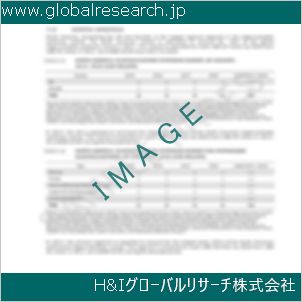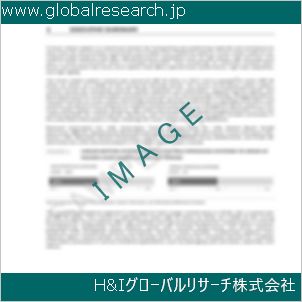Table of Contents
1 Industry Overview of M-Toluidine
1.1 Definition and Specifications of M-Toluidine
1.1.1 Definition of M-Toluidine
1.1.2 Specifications of M-Toluidine
1.2 Classification of M-Toluidine
1.3 Applications of M-Toluidine
1.3.1 Nuclear Application
1.3.2 Non-Nuclear Application
1.4 Industry Chain Structure of M-Toluidine
1.5 Industry Overview and Major Regions Status of M-Toluidine
1.5.1 Industry Overview of M-Toluidine
1.5.2 Global Major Regions Status of M-Toluidine
1.6 Industry Policy Analysis of M-Toluidine
1.7 Industry News Analysis of M-Toluidine
2 Manufacturing Cost Structure Analysis of M-Toluidine
2.1 Raw Material Suppliers and Price Analysis of M-Toluidine
2.2 Equipment Suppliers and Price Analysis of M-Toluidine
2.3 Labor Cost Analysis of M-Toluidine
2.4 Other Costs Analysis of M-Toluidine
2.5 Manufacturing Cost Structure Analysis of M-Toluidine
2.6 Manufacturing Process Analysis of M-Toluidine
3 Technical Data and Manufacturing Plants Analysis of M-Toluidine
3.1 Capacity and Commercial Production Date of Global M-Toluidine Major Manufacturers in 2023
3.2 Manufacturing Plants Distribution of Global M-Toluidine Major Manufacturers in 2023
3.3 R&D Status and Technology Source of Global M-Toluidine Major Manufacturers in 2023
3.4 Raw Materials Sources Analysis of Global M-Toluidine Major Manufacturers in 2023
4 Capacity, Production and Revenue Analysis of M-Toluidine by Regions, Types and Manufacturers
4.1 Global Capacity, Production and Revenue of M-Toluidine by Regions 2019-2024
4.2 Global and Major Regions Capacity, Production, Revenue and Growth Rate of M-Toluidine 2019-2024
4.3 Global Capacity, Production and Revenue of M-Toluidine by Types 2019-2024
4.4 Global Capacity, Production and Revenue of M-Toluidine by Manufacturers 2019-2024
5 Price, Cost, Gross and Gross Margin Analysis of M-Toluidine by Regions, Types and Manufacturers
5.1 Price, Cost, Gross and Gross Margin Analysis of M-Toluidine by Regions 2019-2024
5.2 Price, Cost, Gross and Gross Margin Analysis of M-Toluidine by Types 2019-2024
5.3 Price, Cost, Gross and Gross Margin Analysis of M-Toluidine by Manufacturers 2019-2024
6 Consumption Volume, Consumption Value and Sale Price Analysis of M-Toluidine by Regions, Types and Applications
6.1 Global Consumption Volume and Consumption Value of M-Toluidine by Regions 2019-2024
6.2 Global and Major Regions Consumption Volume, Consumption Value and Growth Rate of M-Toluidine 2019-2024
6.3 Global Consumption Volume and Consumption Value of M-Toluidine by Types 2019-2024
6.4 Global Consumption Volume and Consumption Value of M-Toluidine by Applications 2019-2024
6.5 Sale Price of M-Toluidine by Regions 2019-2024
6.6 Sale Price of M-Toluidine by Types 2019-2024
6.7 Sale Price of M-Toluidine by Applications 2019-2024
6.8 Market Share Analysis of M-Toluidine by Different Sale Price Levels
7 Supply, Import, Export and Consumption Analysis of M-Toluidine
7.1 Supply, Consumption and Gap of M-Toluidine 2019-2024
7.2 Global Capacity, Production, Price, Cost, Revenue, Supply, Import, Export and Consumption of M-Toluidine 2019-2024
7.3 USA Capacity, Production, Price, Cost, Revenue, Supply, Import, Export and Consumption of M-Toluidine 2019-2024
7.4 EU Capacity, Production, Price, Cost, Revenue, Supply, Import, Export and Consumption of M-Toluidine 2019-2024
7.5 China Capacity, Production, Price, Cost, Revenue, Supply, Import, Export and Consumption of M-Toluidine 2019-2024
7.6 Japan Capacity, Production, Price, Cost, Revenue, Supply, Import, Export and Consumption of M-Toluidine 2019-2024
8 Major Manufacturers Analysis of M-Toluidine
8.1 Manufacturer One
8.1.1 Company Profile
8.1.2 Product Picture and Specifications
8.1.2.1 Type I
8.1.2.2 Type II
8.1.2.3 Type III
8.1.3 Capacity, Production, Price, Cost, Gross and Revenue
8.1.4 Contact Information
8.2 Manufacturer Two
8.2.1 Company Profile
8.2.2 Product Picture and Specifications
8.2.2.1 Type I
8.2.2.2 Type II
8.2.2.3 Type III
8.2.3 Capacity, Production, Price, Cost, Gross and Revenue
8.2.4 Contact Information
8.3 Manufacturer Three
8.3.1 Company Profile
8.3.2 Product Picture and Specifications
8.3.2.1 Type I
8.3.2.2 Type II
8.3.2.3 Type III
8.3.3 Capacity, Production, Price, Cost, Gross and Revenue
8.3.4 Contact Information
8.4 Manufacturer Four
8.4.1 Company Profile
8.4.2 Product Picture and Specifications
8.4.2.1 Type I
8.4.2.2 Type II
8.4.2.3 Type III
8.4.3 Capacity, Production, Price, Cost, Gross and Revenue
8.4.4 Contact Information
8.5 Manufacturer Five
8.5.1 Company Profile
8.5.2 Product Picture and Specifications
8.5.2.1 Type I
8.5.2.2 Type II
8.5.2.3 Type III
8.5.3 Capacity, Production, Price, Cost, Gross and Revenue
8.5.4 Contact Information
…
9 Marketing Trader or Distributor Analysis of M-Toluidine
9.1 Marketing Channels Status of M-Toluidine
9.2 Traders or Distributors with Contact Information of M-Toluidine by Regions
9.3 Ex-work Price, Channel Price and End Buyer Price Analysis of M-Toluidine
9.4 Regional Import, Export and Trade Analysis of M-Toluidine
10 Industry Chain Analysis of M-Toluidine
10.1 Upstream Major Raw Materials Suppliers Analysis of M-Toluidine
10.1.1 Major Raw Materials Suppliers with Contact Information Analysis of M-Toluidine
10.1.2 Major Raw Materials Suppliers with Supply Volume Analysis of M-Toluidine by Regions
10.2 Upstream Major Equipment Suppliers Analysis of M-Toluidine
10.2.1 Major Equipment Suppliers with Contact Information Analysis of M-Toluidine
10.2.2 Major Equipment Suppliers with Product Pictures Analysis of M-Toluidine by Regions
10.3 Downstream Major Consumers Analysis of M-Toluidine
10.3.1 Major Consumers with Contact Information Analysis of M-Toluidine
10.3.2 Major Consumers with Consumption Volume Analysis of M-Toluidine by Regions
10.4 Supply Chain Relationship Analysis of M-Toluidine
11 Development Trend of Analysis of M-Toluidine
11.1 Capacity, Production and Revenue Forecast of M-Toluidine by Regions and Types
11.1.1 Global Capacity, Production and Revenue of M-Toluidine by Regions 2024-2029
11.1.2 Global and Major Regions Capacity, Production, Revenue and Growth Rate of M-Toluidine 2024-2029
11.1.3 Global Capacity, Production and Revenue of M-Toluidine by Types 2024-2029
11.2 Consumption Volume and Consumption Value Forecast of M-Toluidine by Regions, Types and Applications
11.2.1 Global Consumption Volume and Consumption Value of M-Toluidine by Regions 2024-2029
11.2.2 Global and Major Regions Consumption Volume, Consumption Value and Growth Rate of M-Toluidine 2024-2029
11.2.3 Global Consumption Volume and Consumption Value of M-Toluidine by Types 2024-2029
11.2.4 Global Consumption Volume and Consumption Value of M-Toluidine by Applications 2024-2029
11.3 Supply, Import, Export and Consumption Forecast of M-Toluidine
11.3.1 Supply, Consumption and Gap of M-Toluidine 2024-2029
11.3.2 Global Capacity, Production, Price, Cost, Revenue, Supply, Import, Export and Consumption of M-Toluidine 2024-2029
11.3.3 USA Capacity, Production, Price, Cost, Revenue, Supply, Import, Export and Consumption of M-Toluidine 2024-2029
11.3.4 EU Capacity, Production, Price, Cost, Revenue, Supply, Import, Export and Consumption of M-Toluidine 2024-2029
11.3.5 China Capacity, Production, Price, Cost, Revenue, Supply, Import, Export and Consumption of M-Toluidine 2024-2029
11.3.6 Japan Capacity, Production, Price, Cost, Revenue, Supply, Import, Export and Consumption of M-Toluidine 2024-2029
12 New Project Investment Feasibility Analysis of M-Toluidine
12.1 New Project SWOT Analysis of M-Toluidine
12.2 New Project Investment Feasibility Analysis of M-Toluidine
13 Conclusion of the Global M-Toluidine (CAS 108-44-1) Industry 2024 Market Research Report
| ※参考情報 m-トルイジン(M-Toluidine)は、化学的にはメチル基がアミノ基の位置に存在するトルイジンの一種で、CAS番号は108-44-1で知られています。この化合物は、芳香族アミンに分類され、特定の化学的特性と用途を有しています。 まず、m-トルイジンの化学的構造について説明します。これは、ベンゼン環にメチル基(-CH₃)とアミノ基(-NH₂)が結合している化合物で、メチル基はアミノ基のパラ位置に位置しています。この構造により、m-トルイジンは非常に特異な化学的性質を示します。たとえば、アミノ基は強い塩基性を持っており、化学反応の中で重要な役割を果たします。また、芳香族環の存在は、電子供与性を持たせ、他の化合物との反応性を高める要因となります。 m-トルイジンの物理的な特性としては、常温では無色の液体として存在し、揮発性があります。沸点は約111℃であり、分子量は107.15 g/molです。また、水にはあまり溶けませんが、有機溶媒には良く溶ける特性があります。このため、様々な有機合成や化学実験に利用されることが多いです。 m-トルイジンの用途は多岐にわたります。主に化学合成の中間体として使用され、特に染料や医薬品、農薬などの製造において重要な役割を果たします。具体的には、m-トルイジンはアゾ染料やカップリング剤として使用され、これらの用途においては、その反応性が大いに活かされています。また、工業的にはプラスチックやゴムの添加物としても利用されることがあります。 さらに、m-トルイジンは生化学的な研究においても利用され、特に合成生物学や分子生物学の分野で、その役割が注目されています。具体的には、フルオロフォルムなどの有機化合物を合成する際の触媒や前駆体として用いられることがあります。 しかし、m-トルイジンはその安全性について注意が必要な化合物でもあります。長期間の曝露や高濃度での接触は、健康に悪影響を及ぼす可能性があります。たとえば、皮膚や眼への刺激、不快感、さらには発がん性物質としての性質も指摘されており、適切な取扱いが求められます。そのため、取り扱う際には防護具の着用や十分な換気が必要です。 また、環境への影響についても考慮する必要があります。m-トルイジンは自然界では生分解性が低く、環境中に放出されると土壌や水質を汚染する要因になる可能性があります。このため、製造や廃棄の際には、環境への配慮が欠かせないのです。 関連技術としては、m-トルイジンを用いた化学合成における新しい手法や触媒の開発が進められています。たとえば、環境に優しい反応条件や、反応効率を向上させる新しい触媒の開発は、m-トルイジンの利用の幅を広げることにつながります。さらに、モニタリング技術の向上により、m-トルイジンの環境中での挙動や変動を正確に把握する手法が確立されつつあります。 最後に、将来的な展望としては、m-トルイジンを基にした新しい化合物の開発や、より環境配慮型の合成法、ならびに安全性向上のための研究が進むことでしょう。また、実用的な応用が広がる中で、その安全性への配慮がますます重要となると考えられます。 以上のように、m-トルイジンは特異な化学的特性を持ち、幅広い用途がある一方で、安全性や環境への影響にも配慮が必要な物質です。今後の研究や技術の進展が期待される分野であり、持続可能な形での利用が求められています。 |
❖ 免責事項 ❖
http://www.globalresearch.jp/disclaimer












